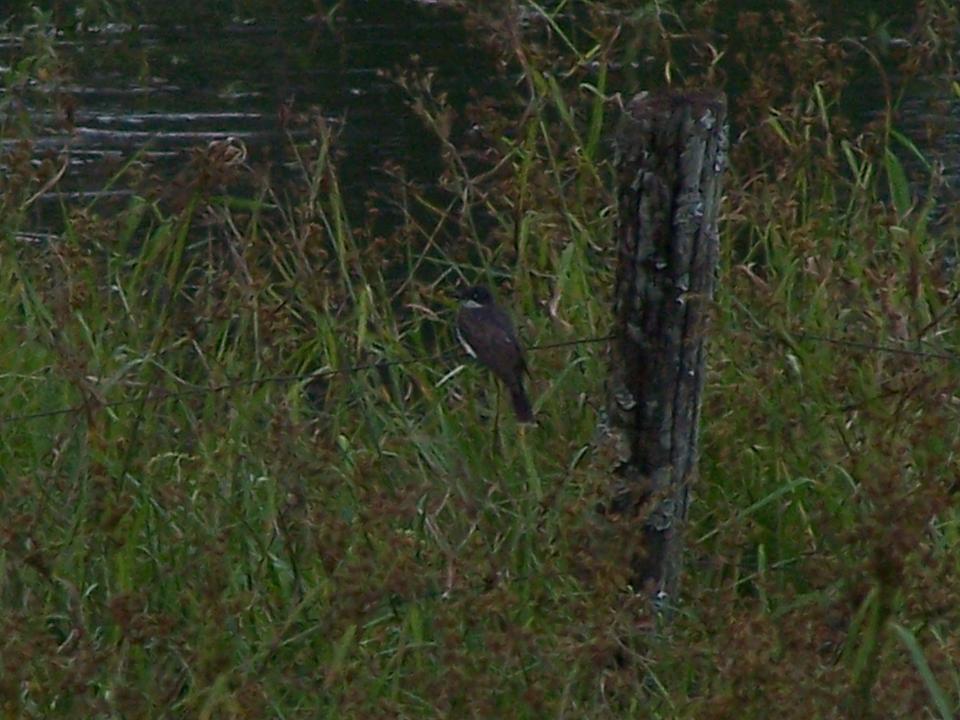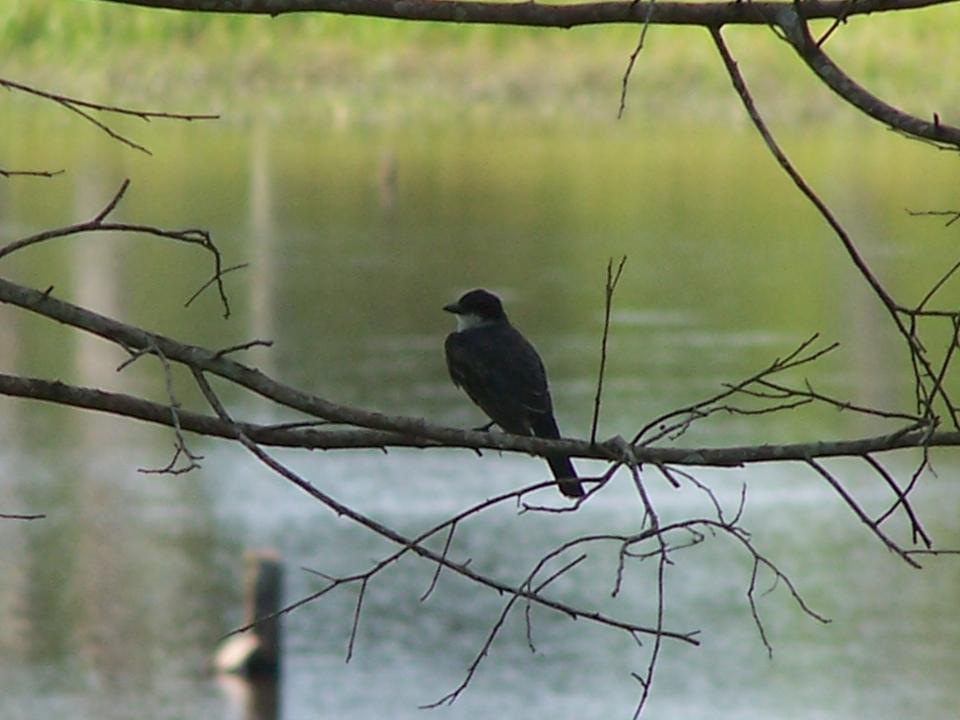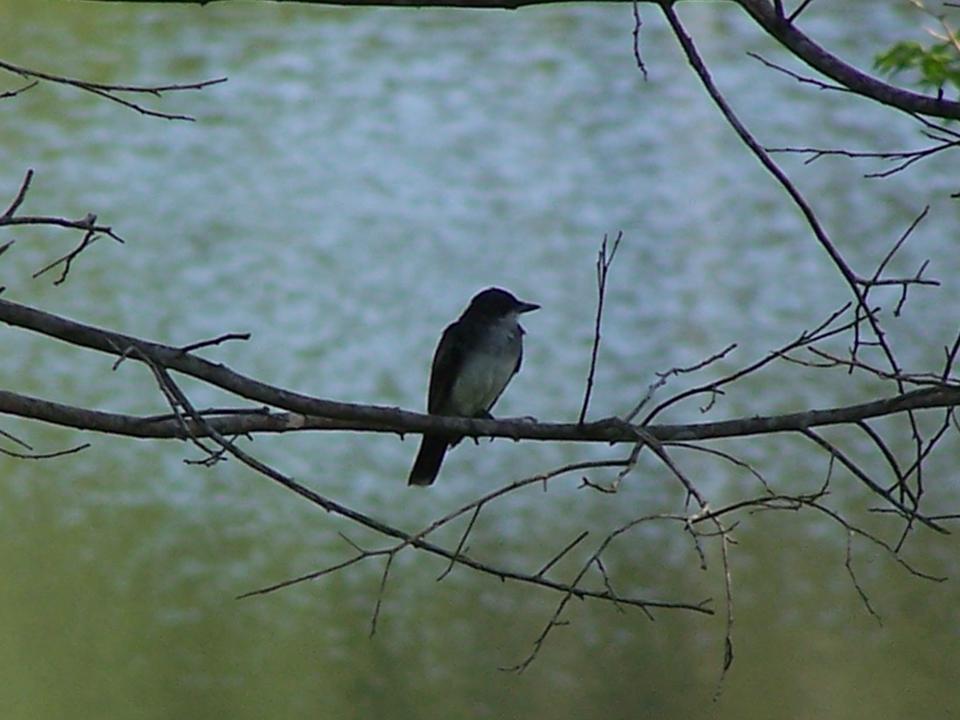

FIG 1: Dorsal view of Eastern Kingbird Tyrannus tyrannus showing diagnostic white tail tip. PROCOSARA, PN San Rafael, Departamento Itapúa, Paraguay 15 December 2006 (Photo Paul Smith).
SECOND RECORD OF EASTERN KINGBIRD Tyrannus tyrannus
FOR EASTERN PARAGUAY
Paul Smith and Bryan Wainwright
There are surprisingly few records of Eastern Kingbird Tyrannus tyrannus from Paraguay, the majority of which are from the Chaco (Clay & del Castillo 2004), the most recent by Rob Clay in the Bahía Negra area in 2001 (Hugo del Castillo pers. comm.). The only previous record from eastern Paraguay is from the Asunción area, Departamento Central (Contreras & Gonzalez 1988) with a second unconfirmed report from Aguara Ñu, Departamento Canindeyú by Juan Mazar Barnett (Rob Clay in. litt.). Here we provide details and photographs of the second confirmed record of the species in eastern Paraguay.
On 15 December 2006 at PROCOSARA, PN San Rafael a bird originally spotted on 11 December by Bryan Wainwright was photographed and identified as an Eastern Kingbird by Paul Smith. Further observations proved there to be at least two and possibly three individuals present, one of which may have been a juvenile - on account of the buffy edges to the wing feathers and greyer overall appearance.
Direct comparison was possible with the most likely confusion species, juvenile Fork-tailed Flycatchers Tyrannus savana, and the Kingbirds were seen to be clearly larger and stockier with a shorter, square-ended tail. The broad white tip of the tail was visible at rest in at least one specimen (Fig 1) and obvious in flight on all specimens when the fanned tail appeared rounded. We noted the dark grey mantle providing little contrast with the black cap and wing feathers, considerably darker and less contrasting than the pearl-grey mantle of Fork-tailed. The wings were blackish with dark grey feather edges and more prominent whitish tips to the tertials (Fig 2). Ventrally a dirty grey band across the upper breast was present in all specimens (Fig 3), conclusively eliminating Fork-tailed Flycatcher which has pure white underparts. The flight pattern was similar to the larger Tropical Kingbird Tyrannus melnacholicus to which direct comparison was also possible, the whitish underparts contrasting clearly with the dark tail and underwing.
FIG 2: Dorsal view of Eastern Kingbird Tyrannus tyrannus showing white tertial edges. PROCOSARA, PN San Rafael, Departamento Itapúa, Paraguay 15 December 2006 (Photo Paul Smith).
The Eastern Kingbirds generally perched high, but occasionally adopted lower perches within 1m of the ground. Consistent with Ridgely & Tudor (1994) they were not heard to vocalise and fed mainly on fruit, with only occasional sallies for insects. They behaved aggressively towards other species, and were seen to actively mob a wide variety of unrelated species such as Whistling Heron Syrigma sibilatrix and Grey-breasted Martin Progne chalybea, as well as other Tyrannids including Fork-tailed and Variegated Flycatchers Empidonomus varius.
At one stage an aggressive encounter between an Eastern Kingbird and a Tropical Kingbird was observed, allowing direct size and shape comparison - the Eastern Kingbird being slightly smaller and shorter-billed. The arriving Eastern adopted a higher perch than the Tropical Kingbird, perching horizontally and gesturing towards its adversary with wings slightly drooped



FIG 3: Ventral view of Eastern Kingbird Tyrannus tyrannus showing dusky breast band. PROCOSARA, PN San Rafael, Departamento Itapúa, Paraguay 15 December 2006 (Photo Paul Smith).
and bill open. The Tropical Kingbird responded by maintaing its horizontal posture, slightly opening its wings, fanning its tail and directing the open bill towards its aggressor. No call was made by either bird and the position was held for a few seconds before the Eastern Kingbird backed down and flew to another nearby perch. This encounter was considerably more muted than the Eastern Kingbird´s response to other species, which frequently included long “attack flights” against an opponent that had shown neither threat nor interest in the Kingbirds.
The majority of the Eastern Kingbird population winters in Amazonia, and it is considered a regular but rare winter visitor to Argentina with most records from the Chaco region (Narosky & Yzurieta 1993). There are however reliable sight records from Misiones, Argentina (Tito Narosky pers.comm. to Hugo del Castillo). The low number of reports from Paraguay is surprising and the species is likely overlooked. Confusion is possible with juvenile Fork-tailed Flyacatcher - a common summer visitor - and the Chaco, probably the main wintering area for the species in Paraguay, is severely underwatched. Further records will likely show the species to be more widespread than is previously known.
REFERENCES
1. Clay RP, del Castillo H 2004 - Annotated Checklist of the Birds of Paraguay - Guyra Paraguay, Asunción.
2. Contreras JR, González Romero N 1988 - Una Avifauna en la Ciudad de Asunción, Departamento Central, República del Paraguay p30-34 in Contreras JR (ed.) Ornitología: Argentina-Paraguay, 1988 Corrientes.
3. Narosky T, Yzurieta D 1993 - Birds of Argentina and Uruguay: A Field Guide - Vazquez Mazzini, Buenos Aires.
4. Ridgely RS, Tudor G 1994 - The Birds of South America Volume 2: The Suboscine Passerines - Oxford University Press, Oxford.
Designed by Paul Smith 2006. This website is copyrighted by law.
Material contained herewith may not be used without the prior written permission of FAUNA Paraguay.
Photographs on this web-site were taken by Paul Smith, Hemme Batjes, Regis Nossent,
Alberto Esquivel, Arne Lesterhuis, José Luis Cartes, Rebecca Zarza and Hugo del Castillo and are used with their permission.




